[WR]F.A.Q - High Water Season
Posted by Nick Teynor & Photos by Logan Griffith on May 20th 2025
Welcome to what we're calling Western Rivers Frequent Angling Questions or [WR]F.A.Q's. These periodic features shoot to highlight and de-mystify some of our favorite angling opportunities each year across the local waters as well as techniques and other parts of angling. Stay tuned for more and as always stop by or give us a call to talk more about anything fly-fishing!
When do high water conditions start and how long are they going to last?
High water, or “Run-Off” season changes every year but usually starts in early to mid-May when air temps reach 70-80 degrees for a week or more and lasts through June. If we have a higher snowpack, run-off will go longer, and if we didn’t have a good winter, the run-off season will be shorter. While the high-water season will vary region to region, or even drainage to drainage, it’s usually over around the 4th of July throughout the West. Reservoir capacities also play into the levels of our tailwater fisheries as how much space is available going can dictate when they need to move water to make space for inflow.
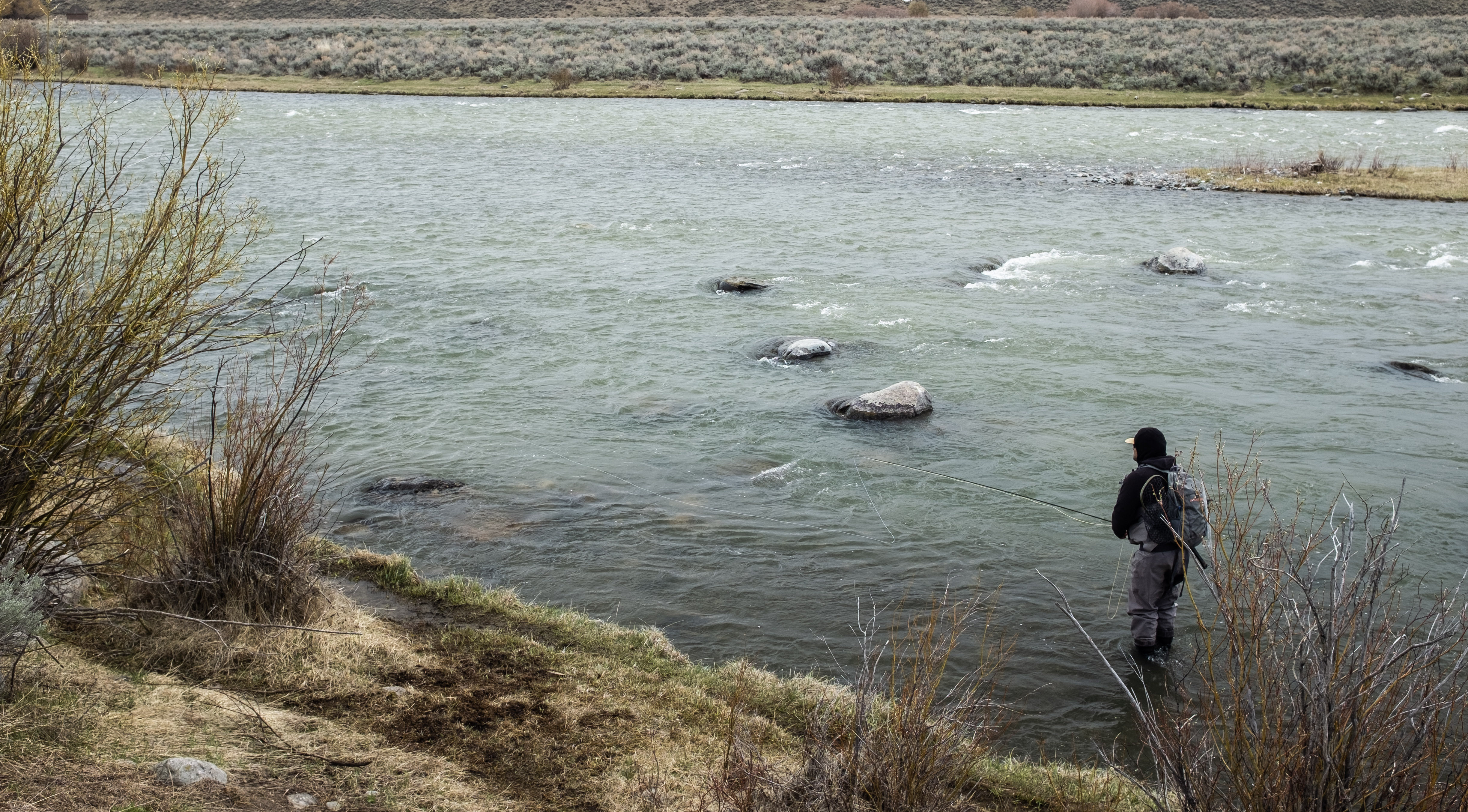
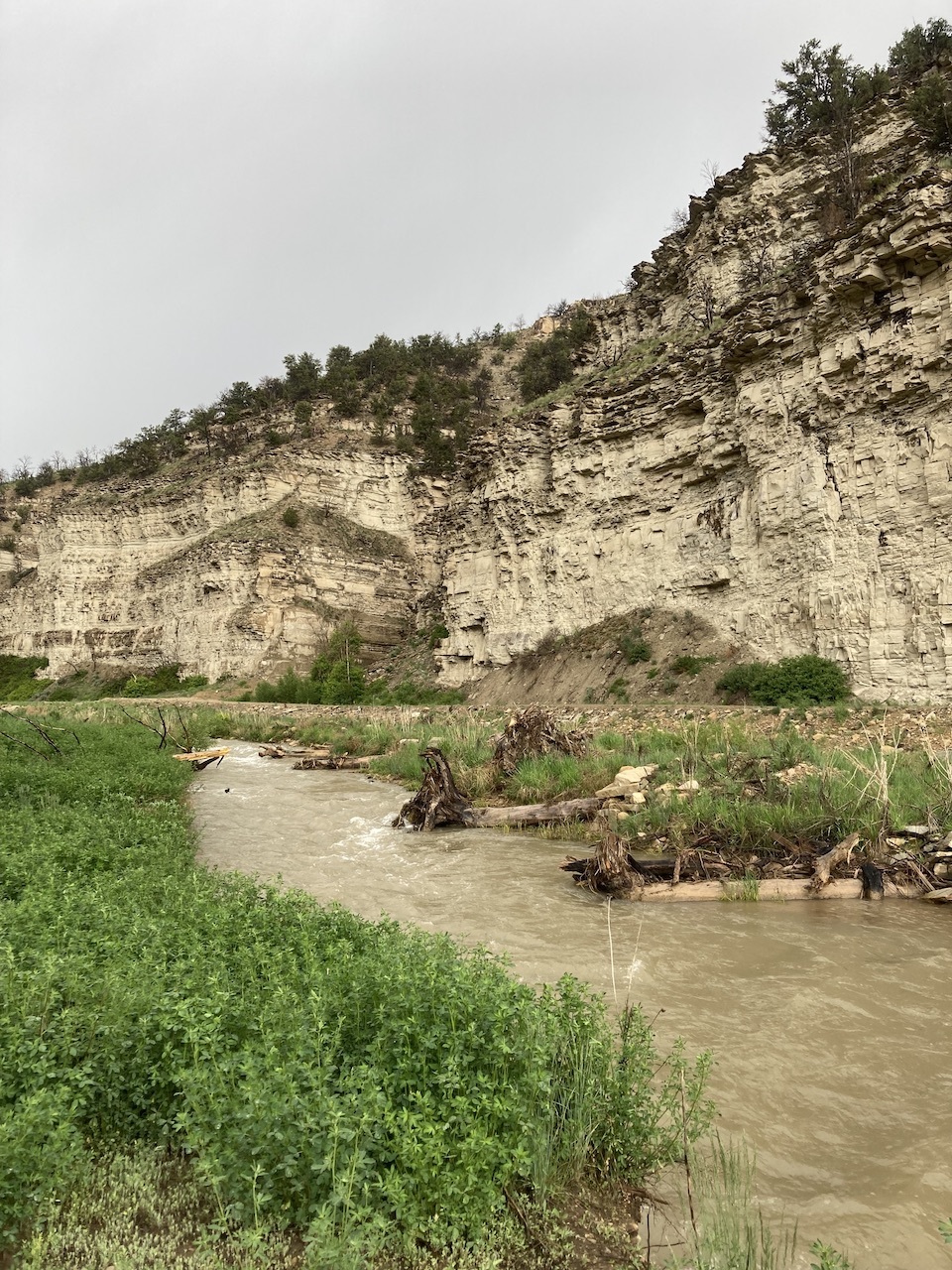
*Left: Top-secret Montana fishery sporting a very fishable level of color. *Right: Utah small-stream sporting a "go somewhere else" level of color.
How can I tell if the flow on my favorite stream is high, low or good?
Every river and stream has a window in which flows are ideal. Years of experience visiting these fisheries at different levels and visiting the graphs has helped us determine the window which we consider the flow ideal or what we would call low, high or expect to be off-color.
The simple and quick thing to do if you aren’t sure, is to give us a call or check the report.
If there is no local fly shop to call, or if they don’t have an on-line fishing report with stream flow links, we use the USGS Streamflow Website to figure out what the flows are. Each state may also have their own streamflow data on specific river drainages, but the USGS is and has been a dependable source of info for years and encompasses entire states. Monitoring for steady rises, spikes and using the available tools for looking at past date ranges can help you determine what is happening, real time. We also watch CUWCD (Central Utah Water Conservancy District) for updates on Jordanelle & Deer Creek Reservoir releases and the Salt Lake County Watershed data to monitor the Wasatch Front drainages.
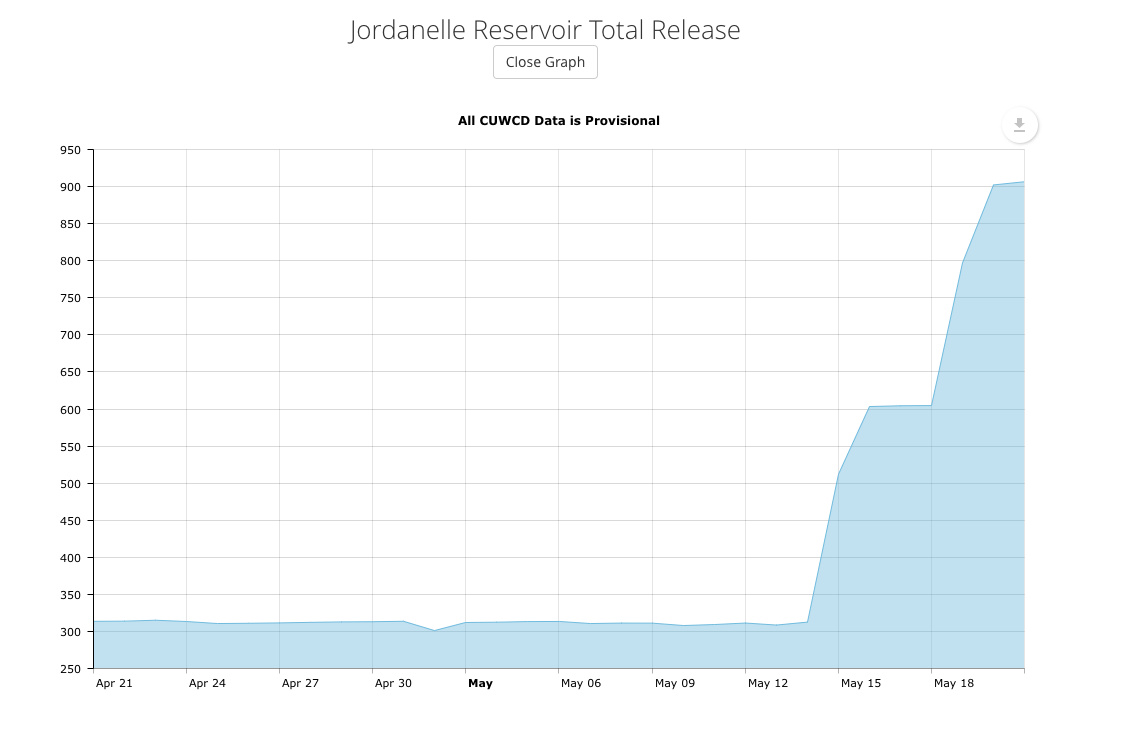
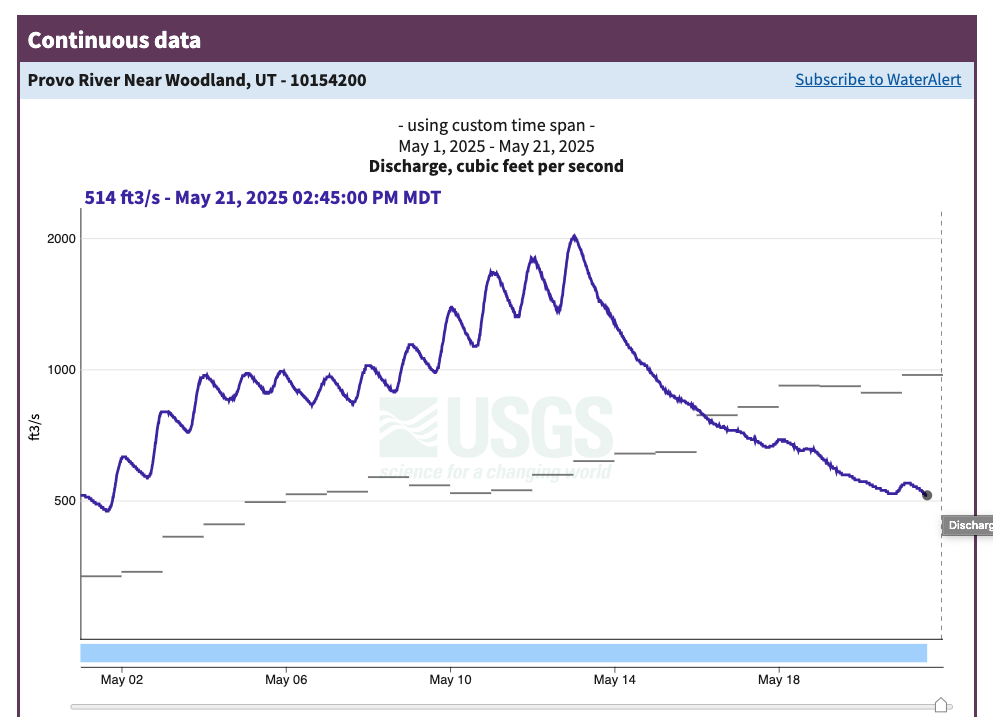
*Both of these graphs were screen shot on 5/21/25. What can you deduce based on the visible trends of these fisheries?
Can I still find fish during high water and/or low clarity conditions?
Yup, you can! There will be a time when the water is too high, or the water too off-color, but you can find fish in high-water conditions. The key is to focus on the river edges, and side channels. When flows go high, the fish are pushed to the edge in order to get out of the current, and find slower, more manageable currents. That means the fish will LITERALLY be at your feet, and that you will not need to get in the water very far-if at all. Flooded side channels, cut banks and structure also offer fish a break from the faster current and should not be overlooked.
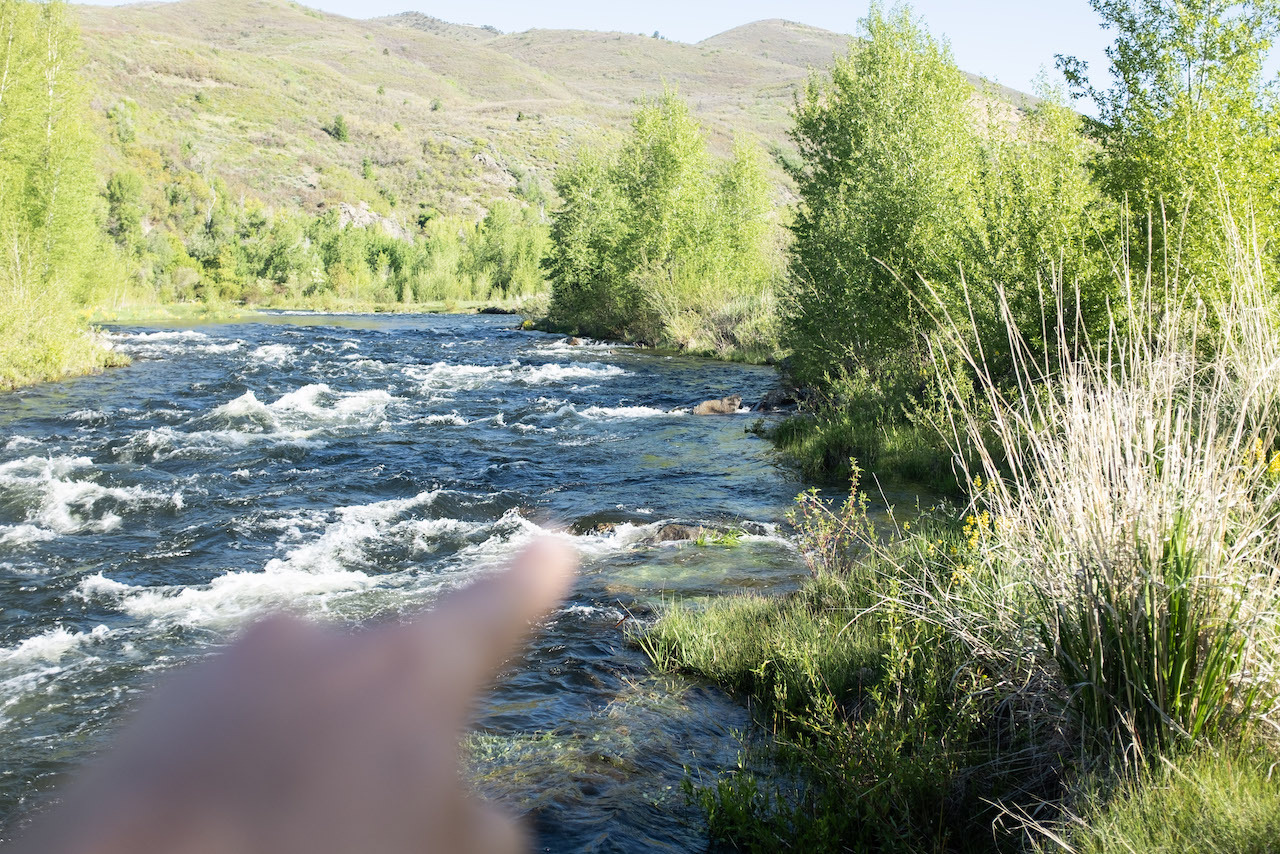
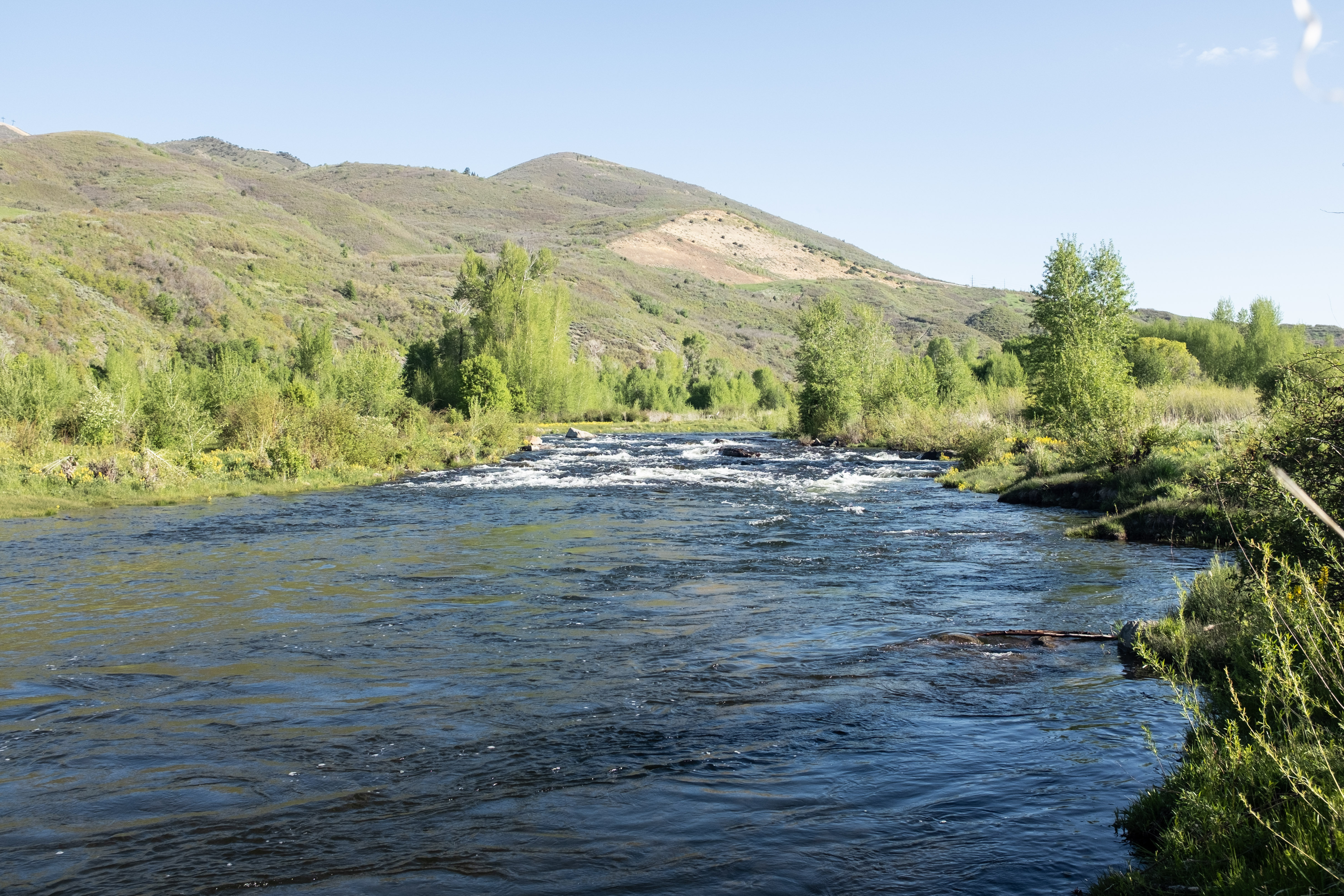
* Middle Provo at 910 CFS. Side pockets and side channels are going to be your ticket to success at these flows; No need to wade as fish will be pushed to the edges.
What are the best tactics & flies for finding fish?
With the higher water flow, the rivers bottom will be scoured, which means there will be A LOT of nymphs and invertebrates in the current for fish to pick off. Nymphing with anything from caddis larva, mayfly nymphs, stonefly nymphs, scuds, sow bugs, and aquatic worms are solid options. Fishing streamers in the soft pockets, river edges, and side channels is also a viable option, because the high flows allow larger fish to hang in shallows where prey fish also find shelter or ambush fish/scuplins/bait that are being pushed around. One thing to keep in mind is that the closer the fish are to the edge, the more sticks and debris there will be to potentially snag on. We recommend folks use either lighter flies, or jig style flies in order to potentially reduce losing flies. For low-clarity conditions, patterns that are darker or contain some flash to pick up any available light are more easily seen by trout.
Here’s some go-to high water flies:
• Jig Streamers #8-#12
• Geisha Girl #6
• Dungeon-style Streamers
• Sheila Sculpin #6
• Sculpzilla #4
• San Juan / Squirmy Worms #12-#16
• Sow Bugs / Scuds #12-#16
• Copper Johns #12-#16
• Pat’s Rubber Legs / Girdle Bugs #8-#12
• Prince Nymphs #10-#16
• Hare’s Ears #10-#16
• Duracell Jig Nymphs #12-#16
• Spanish Bullet Jig Nymphs #12-#16
• Blow Torch Jig Nymphs #12-#16
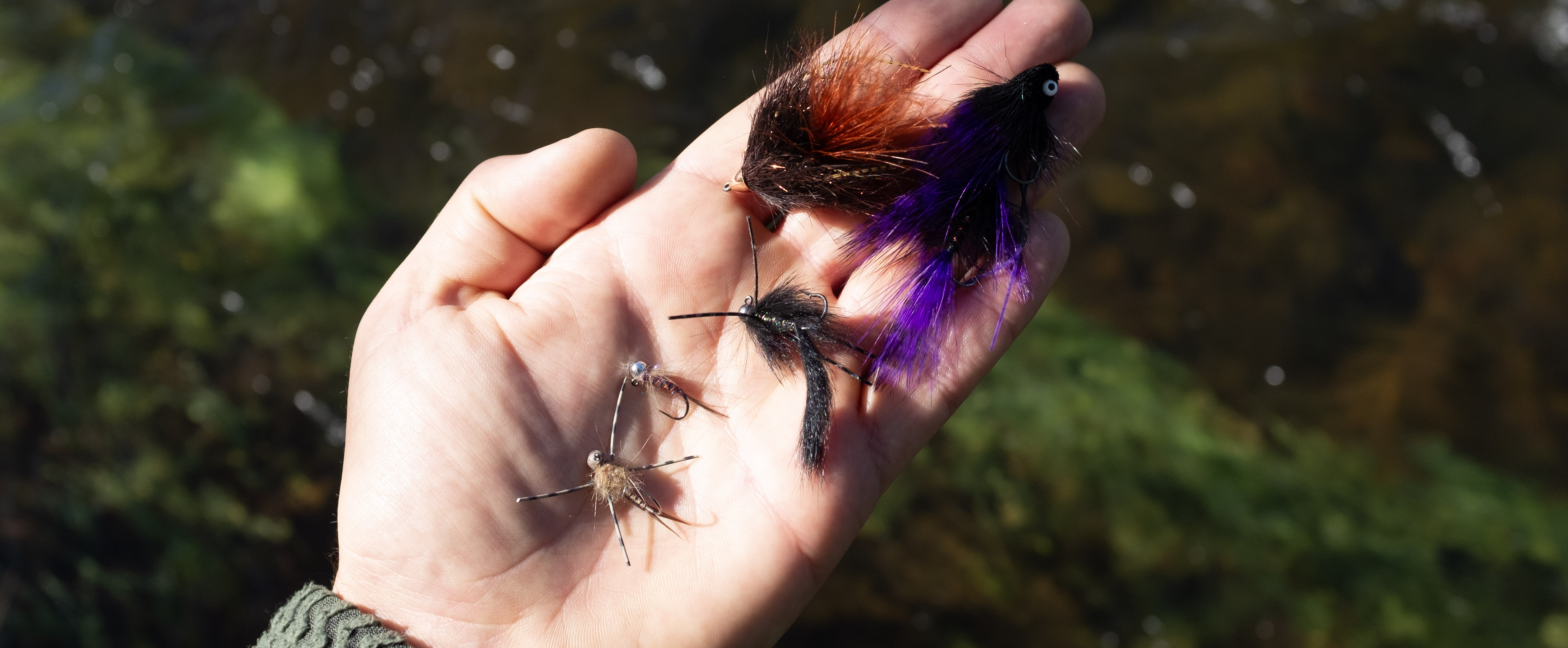
* Jig-head nymphs, larger stonefly imitations, leeches, big-profile streamers and a little flash.
The water on my favorite fishery is too high to fish/dangerous/inaccessible. What are my other options?
There are plenty of other fishing options during the high-water season, you just need to find them! Fishing in ponds, lakes, and reservoirs from shore (or boat) will continue to be a good option for trout until the heat of Summer drives the fish to deeper water. May and June are also a great time to go look for Carp, Bass, and Sunfish in local lakes, ponds, and reservoirs. There are usually a handful of fisheries, no matter where you are in the country, that have one if not all these species available to fish for. Another option would be to do some research and look for Spring Creeks or other Tailwater fisheries that have a more controlled flow release. You’ll probably have to do some driving to find these, and chances are that these areas will be busy if they are the only streams in shape to fish in that region. In short, it pays to think outside the box during high water season and be willing to fish for new species.
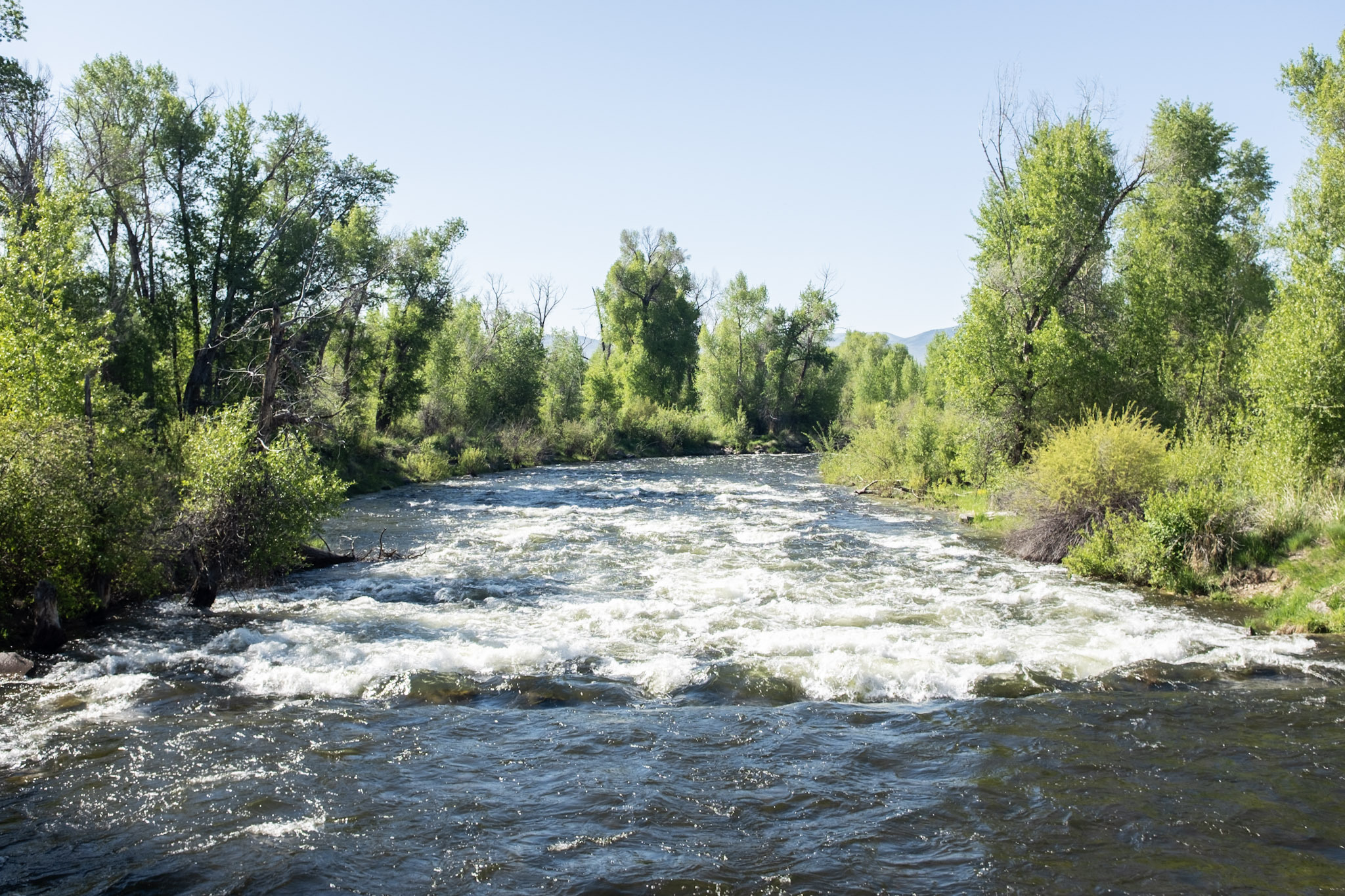
*Middle Provo below River Road Bridge at 910 CFS


![[WR]F.A.Q - High Water Season [WR]F.A.Q - High Water Season](https://cdn11.bigcommerce.com/s-8uk8w4kj9b/images/stencil/460x250/uploaded_images/screen-shot-2025-05-20-at-4.37.10-pm.png?t=1747780657)
